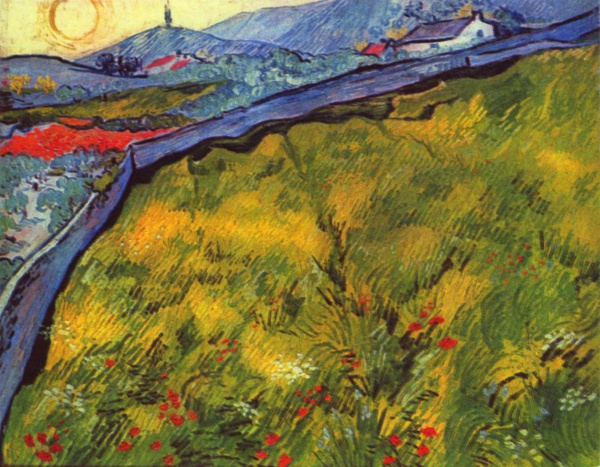Facts About The Wheat Field, Sunrise
"The Wheat Field" is a remarkable series of oil paintings by Vincent van Gogh, created during his stay in Saint-Rémy-de-Provence. These works capture the view from Van Gogh’s bedroom window in the asylum, depicting a field bordered by stone walls and surrounded by farmland, olive groves, and vineyards extending towards the hills of Les Alpilles. Over the course of a year, from May 1889 to May 1890, Van Gogh painted this scene multiple times, portraying the changing seasons and various elements like storms, reapers, fresh wheat, and springtime flowers.
Among the distinguished pieces in this series are "Wheat Field at Sunrise" housed in the Kröller-Müller Museum, and "Enclosed Field with Rising Sun" which was exhibited at Les XX in Brussels in 1890. Van Gogh drew inspiration for these works from the view he had from his cell at Saint-Paul Hospital, creating around twelve paintings of the enclosed field and the distant mountains. He described the scene as a square wheat field framed by a stone wall, with the colors of the wheat field beautifully contrasting against the wall.
The series exquisitely captures different seasons with paintings such as "Green Wheat Field" "Mountainous Landscape Behind Saint-Rémy" "Wheat Field with Reaper and Sun" and "Landscape with Wheat Sheaves and Rising Moon." Through his vibrant colors and expressive brushwork, Van Gogh brought these scenes to life, revealing his deep emotional connection to the landscape.
As the seasons changed, Van Gogh continued to paint the wheat field, producing works like "Wheat Field with a Reaper" "Enclosed Field with Peasant" and "Wheat Field behind Saint-Paul Hospital with a Reaper." These paintings explore themes of life, death, and natural cycles, with each brushstroke imbued with a sense of vitality and movement.
Van Gogh's exploration of the wheat field extended into fall and winter, resulting in paintings like "Rain" "Wheat Field with a Rising Sun" and "Wheat Field with Cypresses." These works showcase his evolving style and emotional depth, culminating in masterpieces that capture the essence of the landscape and his profound bond with nature.

 Belgium
Belgium